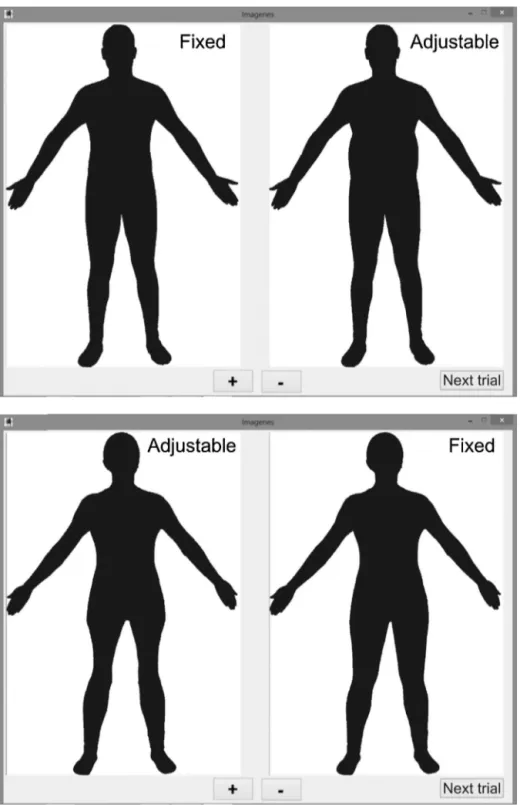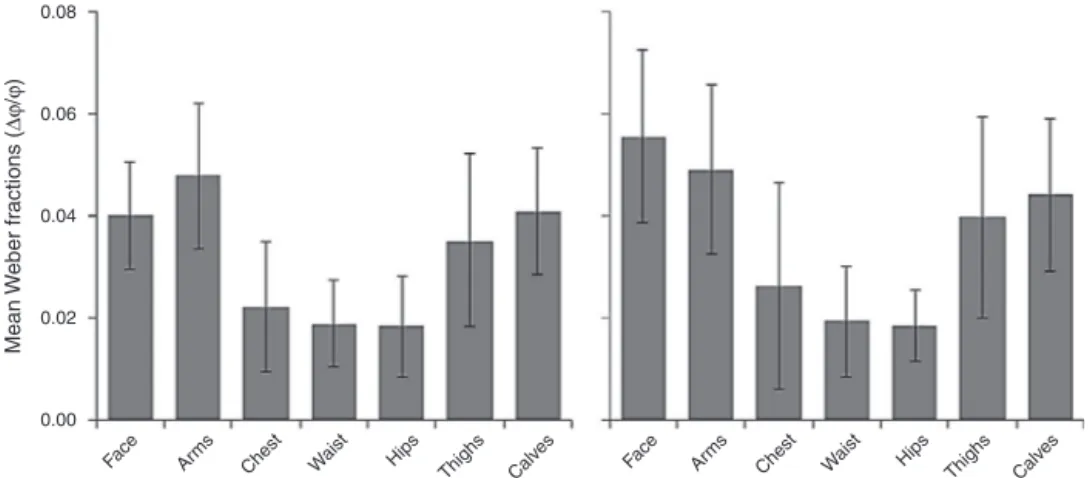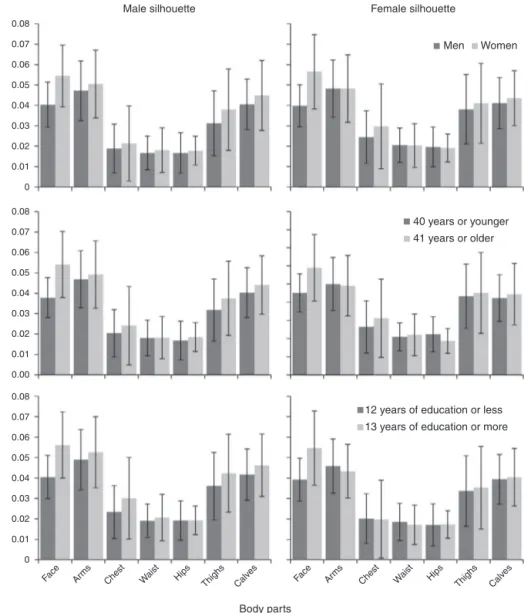Body size estimation: Discrimination of subtle differences in male and female body parts / Estimación del tamaño corporal: Discriminación de diferencias sutiles en partes corporales de hombres y mujeres
Texto completo
Figure




Documento similar
The aim of this study was to analyse the performance and the semantic organization of patients with anorexia nervosa (AN) and of healthy controls by means of a “Human Body Parts”
Government policy varies between nations and this guidance sets out the need for balanced decision-making about ways of working, and the ongoing safety considerations
No obstante, como esta enfermedad afecta a cada persona de manera diferente, no todas las opciones de cuidado y tratamiento pueden ser apropiadas para cada individuo.. La forma
such a system was common to most of the Hellenic city states (albeit with differences, for example about the start of the year), and if the orientation of temples had
So we have obtained a comparison result between the capacity of a convex body in M and the capacity of a round ball in the Euclidean space via the previous comparison of the
Significant differences (U test, P ≤ 0.05) for OTU number and Chao1 were found between mucosa from different parts of the intestine and environmental compartments (water, sediments,
The aim of this paper is to analyse the Physical Education teachers’ attitudes towards gender equality, and compare attitudinal differences between male and female teachers..
Considering the wide cultural and language differences between Spain and Mexico, the aim of this study was to test the psychometric properties of a new version of the SURPS